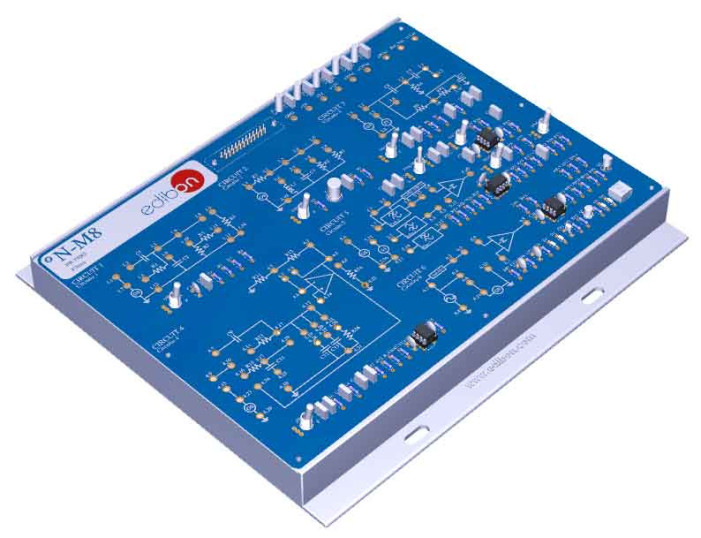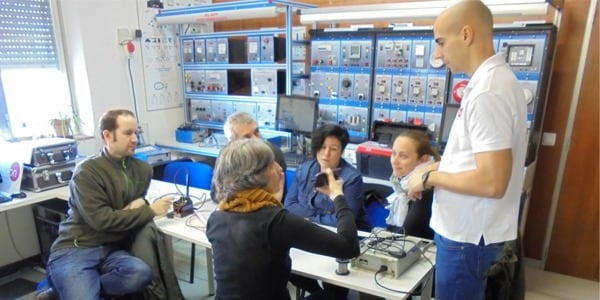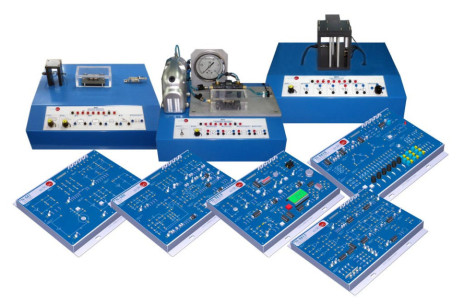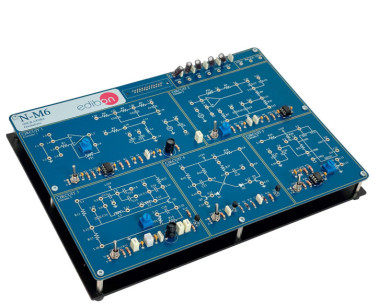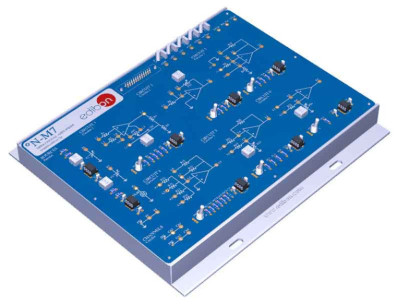On December 1st, the Repair Course for Small Laboratory Equipment, taught by our engineers at the EDIBON facilities, was completed, lasting 4 days.
The attendees, (Laboratory technicians and maintenance of the Rey Juan Carlos University of Madrid) had the opportunity to perform multiple...
N-M8 Filters Module
INNOVATIVE SYSTEME
With Filters Module, "N-M8", designed by EDIBON, the different types of filters can be studied: RC and LC, in "T" type configuration, active filters and also study associations of one and others in order to be able to practice with more complex filters, to obtain other filters with certain desired characteristics (low-pass filter, high-pass, band-pass and eliminated band).
Erweiterungen
ÄHNLICHE NEUIGKEITEN
ALLGEMEINE BESCHREIBUNG
An electronic filter is an element that allows electrical signals to pass through it, at a specific frequency or frequency ranges while preventing the passage of others, being able to modify both, their amplitude and phase. It is a device that separates, passes or suppresses a group of signals from a mixture of signals.
Filters are two-port systems, one input and one output, operating in the frequency domain. Their operation is based on blocking signals in terms of their spectral content, letting through signals whose frequency is within a certain range known as the pass band and rejecting those signals outside this range, known as the rejection band. A filter works on input signals to produce an output signal whose spectral content depends on the type of filter.
A frequency filter is a circuit that uses electrical and/or electronic components to attenuate, correct or reject a range of frequencies within any type of signal. This range can be different from time to time as filters are very flexible and different types exist.
With Filters Module, "N-M8", designed by EDIBON, the different types of filters can be studied: RC and LC, in "T" type configuration, active filters and also study associations of one and others in order to be able to practice with more complex filters, to obtain other filters with certain desired characteristics (low-pass filter, high-pass, band-pass and eliminated band).
In addition, faults can be simulated in most of the circuits under study. The student must investigate what is happening in the circuit and why it is not working properly. These faults simulations can be of several types from damage components to a hypothetical incorrect circuit assembly.
ÜBUNGEN UND GEFÜHRTE PRAKTIKEN
GEFÜHRTE PRAKTISCHE ÜBUNGEN IM HANDBUCH ENTHALTEN
RC and LC filter responses:
- Frequency response.
- Low-pass filter.
- High-pass filter.
- LC Circuit.
- Faults study in low-pass filter.
- Faults study in high-pass filter.
- Theoretical/practical exercises.
T-shaped Filter:
- Filter with double T link.
- Signal generator circuit.
- Faults study in RC filters with double T.
- Theoretical/practical exercises.
Active filters:
- Low-pass filter with load.
- Low-pass filter with an operational amplifier.
- High-pass filter with load.
- High-pass filter with an operational amplifier.
- The attenuation is cumulative.
- Use of operational amplifier.
- Faults study in active filters.
- Theoretical/practical exercises.
Association of filters:
- Behaviour of the filter.
- Filtering of a distorted signal.
- Filter in cascade: low pass filter and high pass filter.
- Filter in parallel.
- Faults study in filters.
- Theoretical/practical exercises.
MEHR PRAKTISCHE ÜBUNGEN FÜR DAS GERÄT
- Band-pass and band-stop filters.
- Several other exercises can be done and designed by the user.
ERGÄNZENDE AUSRÜSTUNG
14.2.1.6.- LEISTUNGSELEKTRONIK
LIEBA
We present a flexible and modular-based system for learning basic electronics, basic electricity and circuit theory. The advantage given by this learning and teaching system is that the student establishes his own rhythm, thus rendering...
14.2.1.2.- ANALOGE ELEKTRONIK
N-M6
Oscillators Module
Oscillators operation is usually very similar in all of them: the oscillating circuit produces an oscillation, then the amplifier increases it and finally the feedback network takes a part of the energy from the oscillating circuit and introduces...
14.2.1.2.- ANALOGE ELEKTRONIK
N-M7
Operational Amplifiers Module
Operational amplifiers are compact, active, linear and high-gain devices designed to provide the desired transfer function. An operational amplifier consists of an electronic circuit having two inputs and one output. The output is the difference...
QUALITÄT

KUNDENDIENST

 Cookie-Präferenzen
Cookie-Präferenzen

